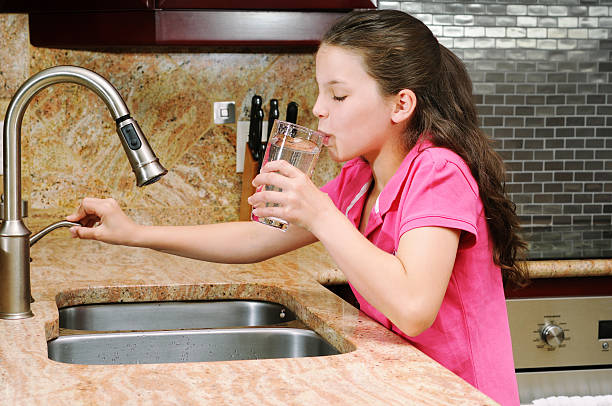1,2-Dibromo-3-chloropropane

Parameter Type: Drinking Water Testing for Volatiles
Parameter Name: 1,2-Dibromo-3-chloropropane
What it is and Where it Comes From:
1,2-Dibromo-3-chloropropane, (dibromochloropropane) better known as DBCP, is the organic compound with the formula BrCH(CH2Br)(CH2Cl). It is a dense colorless liquid although commercial samples often appear amber or even brown. 1,2-Dibromo-3-chloropropane is the active ingredient in the nematicide Nemagon, also known as Fumazone. It is a man-made chemical not found naturally in the environment. It is a soil fumigant formerly used in american agriculture. In mammals it causes male sterility at high levels of exposure. After discovery of its deleterious health effects on humans, the compound was banned from use in 1979 by the United States Environmental Protection Agency (EPA). The continuing presence of the chemical as a contaminant in ground water remains a problem for many communities for years after end of use. Drinking water testing gives you several benefits like peace of mind, identifying contaminants in your water, and insight into health concerns. Safe Home offers Laboratory drinking water testing kits for 1,2-dibromo-3-chloropropane, allowing you to collect your water sample and ship it directly to our EPA-Certified Laboratory. This platform of drinking water testing for 1,2-dibromo-3-chloropropane will give you an accurate level based on the lowest level of a parameter our instruments can detect (Method Detection Level). Safe Home drinking water testing for volatiles can be used for city and well water supplies. Drinking water testing should be done any time you notice a significant change in your water quality.
Health Effects:
Studies of workers have also suggested that 1,2-dibromo-3-chloropropane may cause headache, nausea, lightheadedness, and weakness. No adverse effect on reproduction was seen in people who drank water contaminated with small amounts (0.004-5.75 parts in a billion parts of water) of 1,2-dibromo-3- chloropropane. Studies in animals show that 1,2-dibromo-3-chloropropane may cause birth defects in the offspring of adult rats exposed to large amounts. However, human exposure to 1,2-dibromo-3-chloropropane that occurred at work or by drinking contaminated water has not been linked with birth defects. In mammals it causes male sterility at high levels of exposure.
Solutions to Contaminant Levels:
What are the next steps after drinking water testing? A filter with granular activated carbon (GAC) is a proven option to remove certain chemicals, particularly organic chemicals, from water. GAC filters also can be used to remove chemicals that give objectionable odors or tastes to water such as hydrogen sulfide (rotten eggs odor) or chlorine. Reverse osmosis is a process that removes foreign contaminants, solid substances, large molecules, and minerals from water by using pressure to push it through specialized membranes. Here’s how reverse osmosis works. Unlike osmosis, which is a passive process, reverse osmosis requires external force (pressure) to work. Pressure is applied to a highly concentrated solute solution, such as salt water, to pass through a membrane to a lower concentrate solution. The membrane allows water to flow through but blocks out larger molecules, like contaminants. The reverse osmosis process leaves higher concentrations of solute on one side and only the solvent, or freshwater, on the other. Who do I need to contact to find out more information about water quality in my area? Every community water supplier must provide an annual report to its customers, known as a Consumer Confidence Report (CCR). The report provides information on your local drinking water quality, including the water’s source, contaminants found in the water, and how consumers can get involved in protecting drinking water. How often does the local public water system preform drinking water testing? Frequency of drinking water testing depends on the number of people served, the type of water source, and types of contaminants. Certain contaminants are tested more frequently than others, as established by the Safe Drinking Water Act. You can find out about levels of regulated contaminants in your treated water for the previous calendar year in your annual Consumer Confidence Report (CCR).


